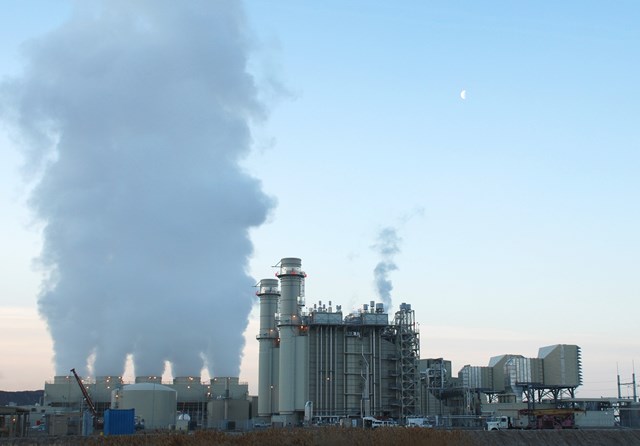Natural gas prices, like any commodity, are affected by supply and demand - but weather plays a main role in this energy's cost.
In order to forecast where natural gas prices will be trading in coming months, it's important to look at what's expected for this winter and how much temperatures will differ from region to region.
Here's what we know about how weather will move natural gas prices into 2015...
The Effect of Another Long, Cold Winter on Natural Gas Prices
 From the standpoint of temperatures, this winter is likely to be about the same as last year, according to most estimates, although snow falls in New England should be less than last year but heavier in the Mid-Atlantic. Prolonged frigid snaps will undoubtedly keep demand higher in most regions of the country.
From the standpoint of temperatures, this winter is likely to be about the same as last year, according to most estimates, although snow falls in New England should be less than last year but heavier in the Mid-Atlantic. Prolonged frigid snaps will undoubtedly keep demand higher in most regions of the country.
That means we can expect U.S. natural gas prices to be between $4.20 and $4.45 per 1,000 cubic feet given a slight increase in overall demand. And as more electricity is generated from gas, that will also contribute to a higher pricing floor.
However, the regional differences will be more pronounced than in recent years. Given the continuing pipeline and distribution problems, prices will be higher in New England than in 2013, with some concerns already expressed for a possible regional shortfall in propane.
In Europe, you can add the geopolitical to the mix, as the likelihood of a continuing Ukrainian crisis will test the ability of Europe to sustain imports of full natural gas consignments from Russia. But the knock-on effect for North American gas prices from Gazprom's European exports will be limited.
But there's another factor that will be a real game-changer for natural gas prices.
In 2015, we'll see the inauguration of significant liquefied natural gas (LNG) exports to both Europe and Asia from the United States. That will be the start of a fundamental realignment of energy trading routes to the continent, but not until later next year.
Meanwhile, coal prices will actually improve in specific areas of the United States (especially the Appalachian basin), where it remains the primary source of power and heat, and metallurgical coal exports will continue to rise to the level of exporting ability. Both of these will allow specific coal production and distributional limited partnerships to improve in value through the first quarter of next year.
However, inferior coal grades in the western United States will experience declines in both demand and prices. That may actually improve the overhead at regional power plants, but it won't create resurgence of coal use in electricity generation.
Rather, the improving value of utility stocks will be confined to those with the ability to source from coal, gas, nuclear, renewables, and even biomass and geothermal. The expense of long-distance lines will be picking up, so those utilities that produce much of their bottom lines from distribution may see lower returns as operations and overhead take a bigger bite out of revenue.
Here's What This Means for Energy Investors
So, the world is hardly coming to an end. But it is likely that the amount of energy needed to run it all will continue to increase.
The good news is the cost of the raw materials will continue to be a manageable factor in the overall economic expansion, regardless of what happens in an American off-year election.
Given this scenario, the success of your energy portfolio will revolve around the careful selection of individual companies, partnerships, and exchange-traded funds (ETFs). And as we move into the end of the year, I'll be certain to keep you informed on the best way to position your portfolio.
And I'll continue to keep you abreast of where natural gas prices are headed - especially once U.S. LNG exports to Europe and Asia start ramping up later next year.
More from Dr. Kent Moors: Icy methane hydrates, also known as "fire ice," are touted by some as the next major source of energy. But there's a dangerous flip side to this ice-like substance. Here's how this deadly "fuel of the future" will speed up climate change...
About the Author
Dr. Kent Moors is an internationally recognized expert in oil and natural gas policy, risk assessment, and emerging market economic development. He serves as an advisor to many U.S. governors and foreign governments. Kent details his latest global travels in his free Oil & Energy Investor e-letter. He makes specific investment recommendations in his newsletter, the Energy Advantage. For more active investors, he issues shorter-term trades in his Energy Inner Circle.



